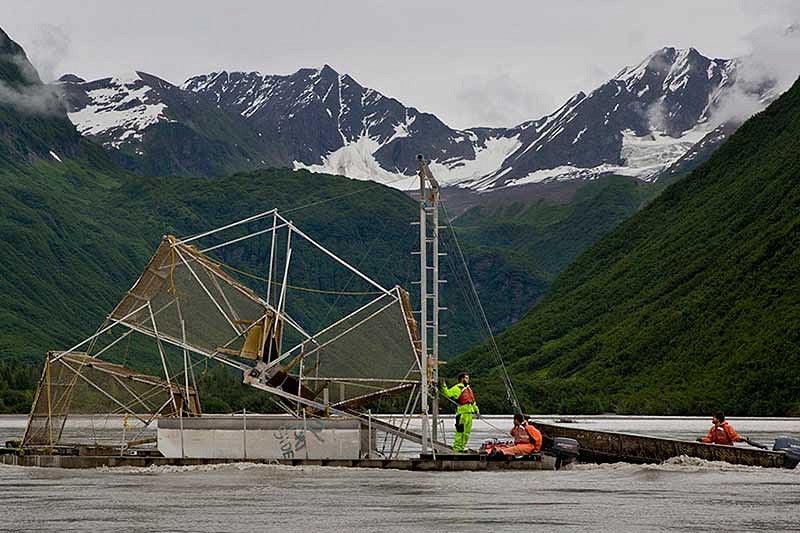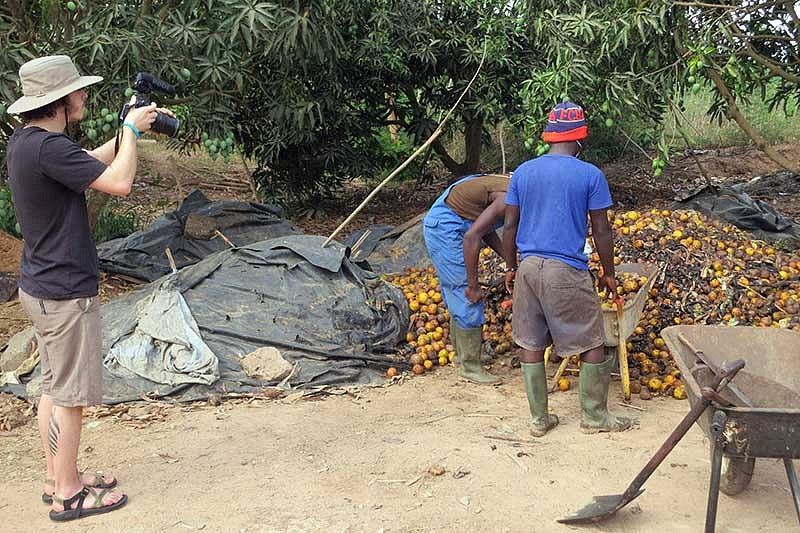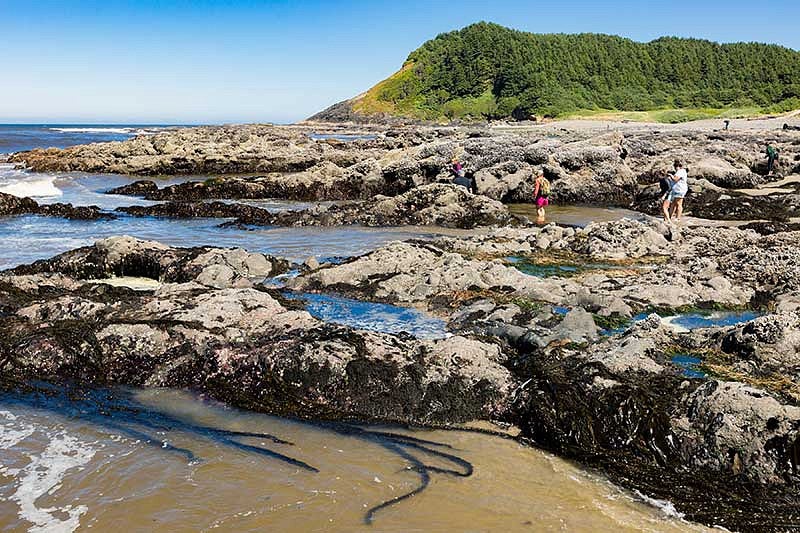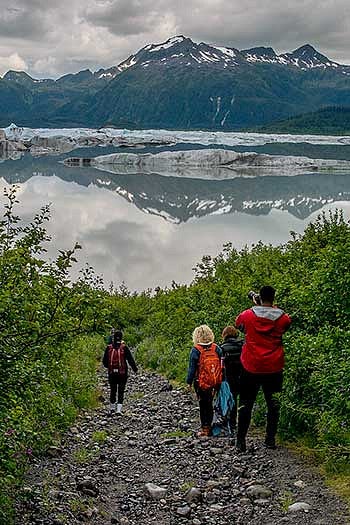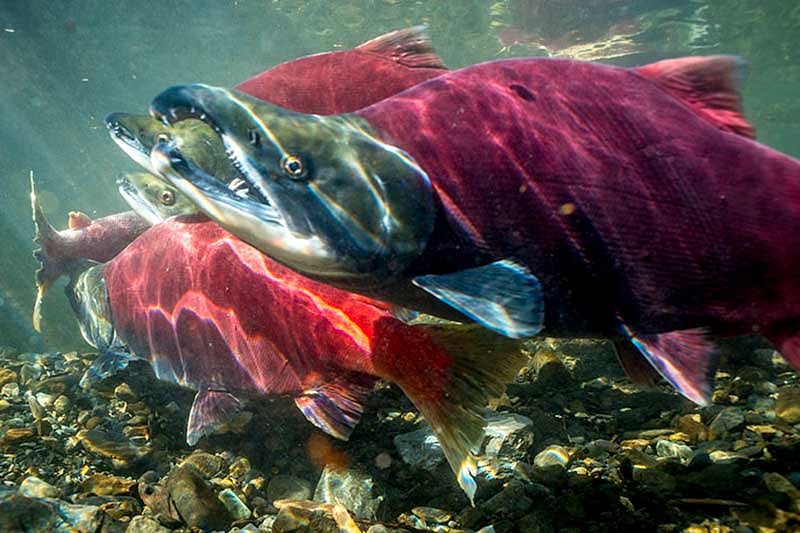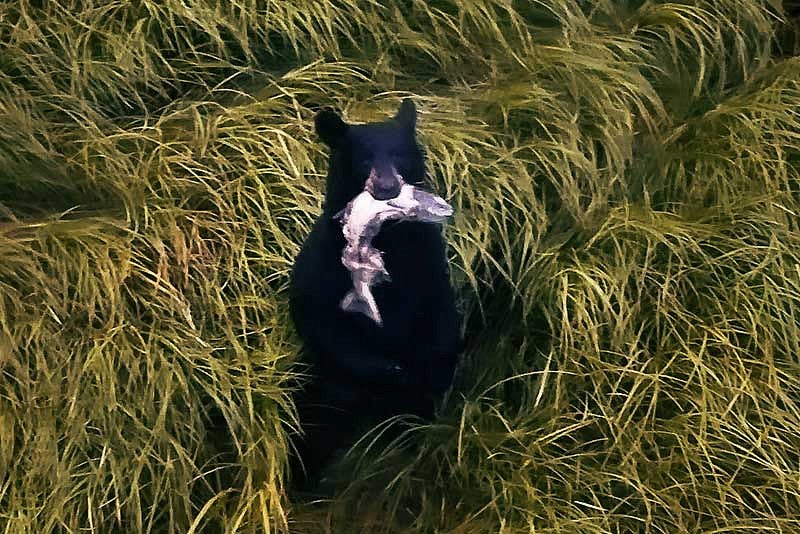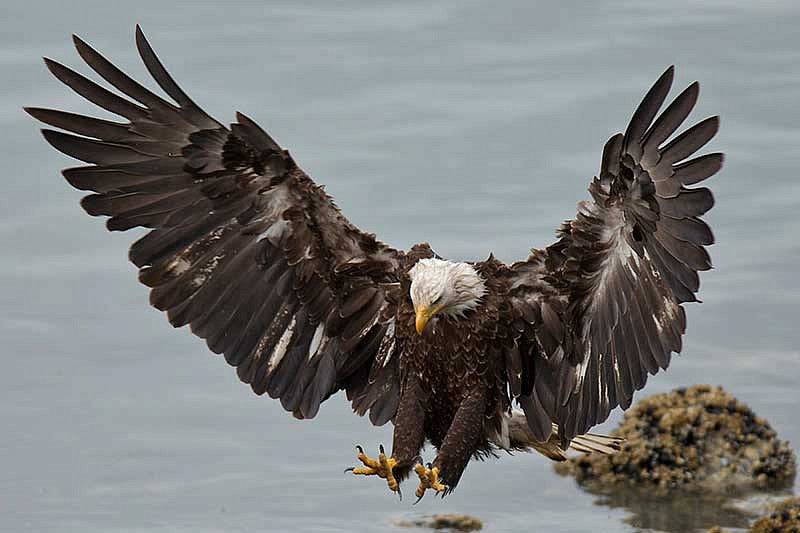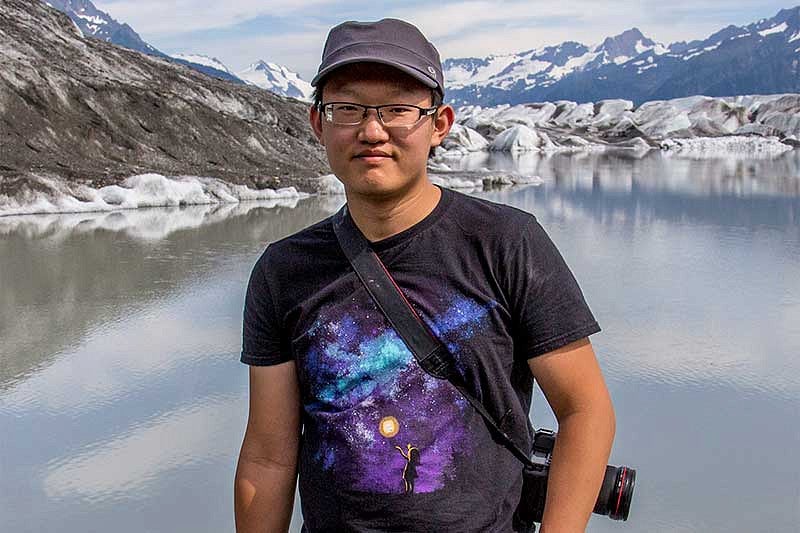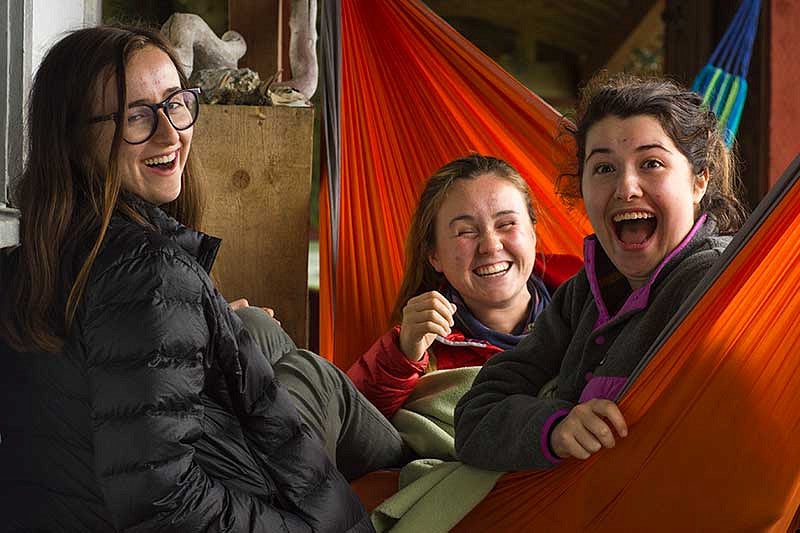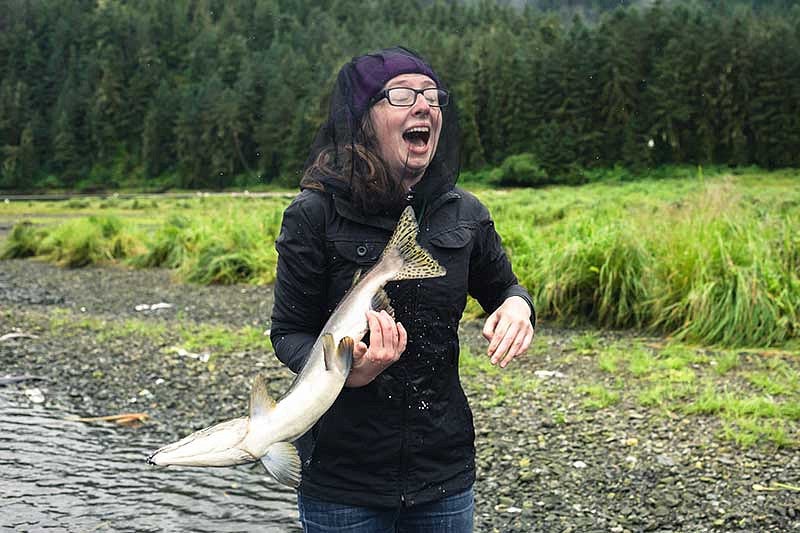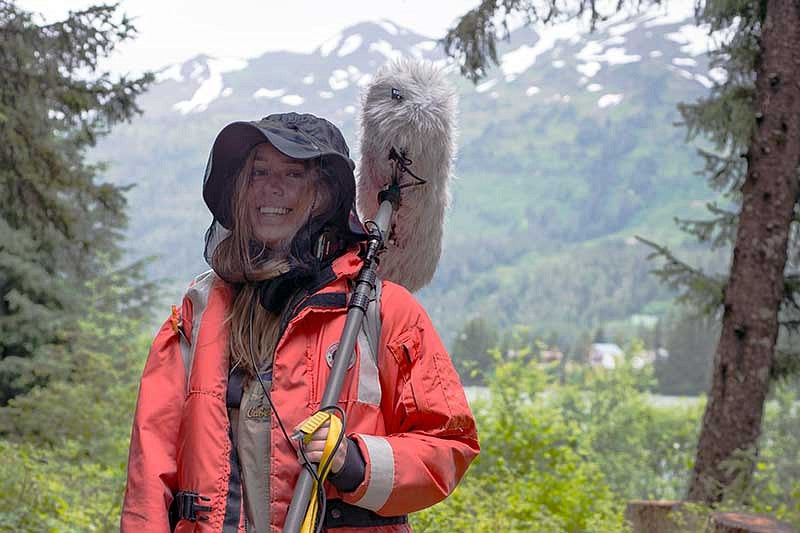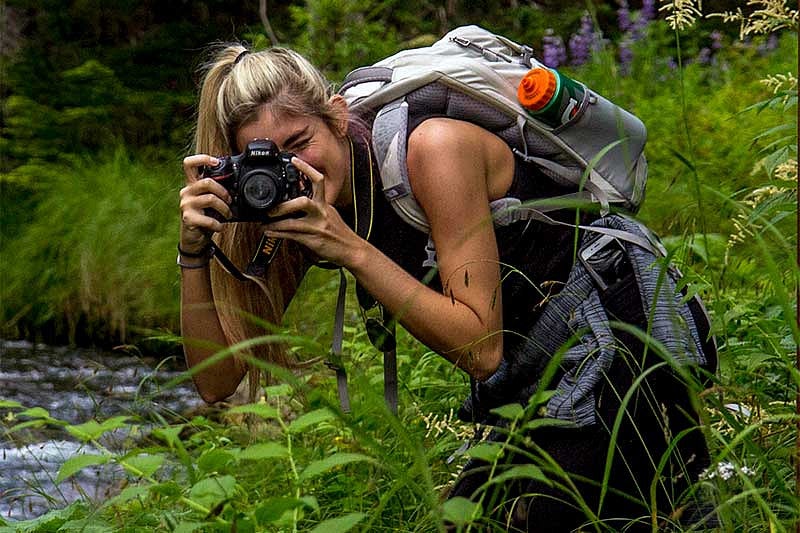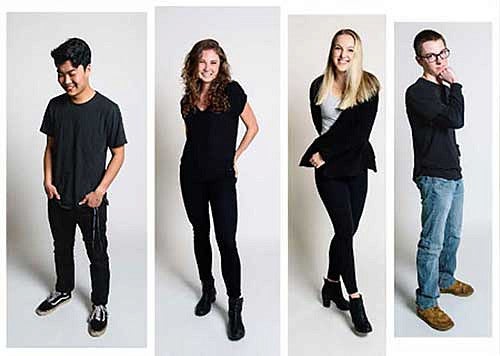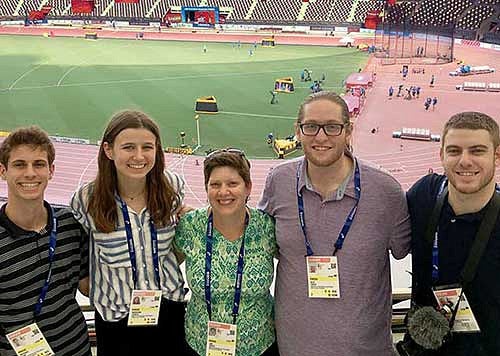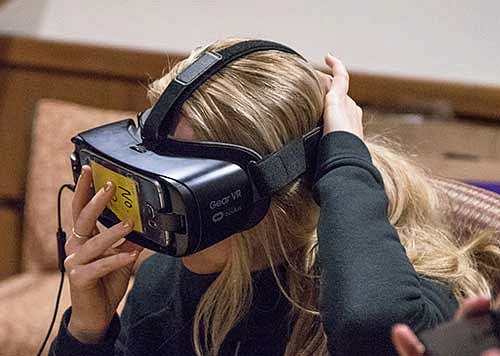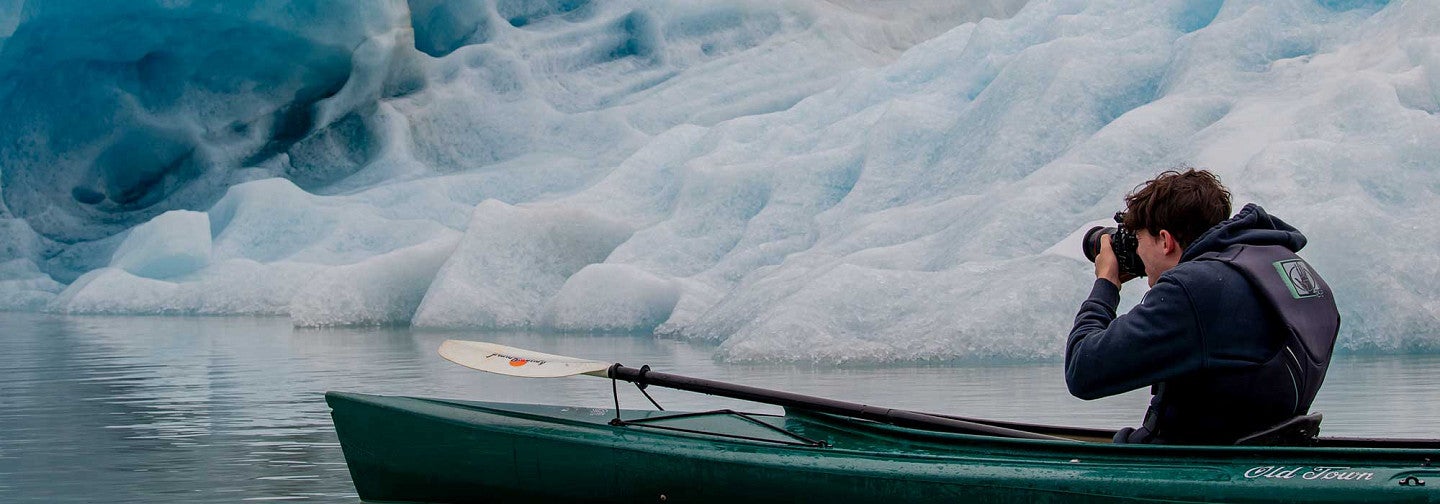
Students witness the impact of a warming planet firsthand in School of Journalism and Communication’s innovative experiential learning program
Last July, journalism senior Bryce Dole and seven of his UO School of Journalism and Communication classmates sat in kayaks on a glacial lake outside Cordova, Alaska. It was so warm that they were dressed in shorts and T-shirts. The uncharacteristic temperature provided an ominous context for the dripping sound of the glacier melting into the lake.
At 74 degrees, it was the start of the hottest month on record in Alaska’s history—tangible evidence of a warming trend that climate scientists have been reporting for years.
As he paddled up to the iceberg, Dole was shocked to realize how delicate it was.
“I remember thinking I could break this whole wall [of the iceberg] if I pulled too hard,” he said.
He recalls the experience as a profound moment in his development as an environmental journalist.
“That personal connection to climate change as a physical thing had never been evident to me until we were out at Sheridan Glacier,” he said. “Being in front of change and physically seeing what is happening in the world,” he added, helped him understand the real impacts of climate change on the people who live in Cordova and places like it.
Dole is one of more than 100 UO students who have traveled to Cordova with the School of Journalism and Communication’s Science & Memory program since 2014. Over the years, those students and faculty have witnessed firsthand the signs of a rapidly changing climate and how people and wildlife are adapting in its wake.
They have also learned how to report on the complex subject of climate science in ways that resonate with the public. The subjects of their multimedia stories have included the glaciers that feed into the local watershed, the salmon fishery that is the economic center of the area, the Native villagers whose people have lived on this land for millennia, and the scientists who translate what is happening into hard data.
Science & Memory by the Numbers
Effective Science Communicators
The faculty who founded Science & Memory—Carolyn S. Chambers Distinguished Professor of Advertising Deborah Morrison, senior journalism instructor Dan Morrison, photojournalism professor of practice Torsten Kjellstand, and Center for Science Communication Research associate director Mark Blaine—know that personal experiences like Dole’s are the first step in developing effective science communicators with a deep understanding of climate issues.
“Our cohort of four faculty began this with the intent of exploring these important issues,” Morrison said. “How could we put students in place to tell these important stories in innovative ways? How could they take this experience and make it a driver of careers and next chapters?”
Since 2017, Science & Memory has expanded its footprint beyond Alaska. It has taken more than 50 students to sites in Oregon, including the Delta Ponds in Eugene and the Oregon Coast. In 2018, the program took 11 students to Ghana to develop a communications campaign on the importance of composting. And this March, eight students are traveling to Hawaii to create content about coral bleaching.
Science & Memory is, at its core, interdisciplinary. Part of the Center for Science Communication Research, the program spans all areas of communication taught in the School of Journalism and Communication—advertising, journalism, public relations, and media research—and caters to students with an interest in science. Integrating communication and environmental studies introduces students to opportunities they might not have recognized otherwise.
The work students have produced over the years has included not only traditional journalism, but also short films, social media stories, narrative and photo packages, photo and art exhibits, undergraduate research symposium posters, and data-driven coloring books.
Awards and Honors
2019 Fast Company World Changing Ideas Award
Ghana compositing campaign
One Show Film Festival Short List
“Will You Change?”
2015-2016 Hearst Journalism Award
Multimedia IV – Team Reporting
First Place
Photography, video, design, and long-form narrative on the Science & Memory website
2015 Office of the Vice President for Research and Innovation
UO Innovation and Impact Award
Science & Memory Program Faculty
2019 – 2020 Hearst Journalism Award for Multimedia I - Narrative Video Storytelling, Fifth Place
“As We Watch: A Copper River Delta Story”
Experiences That Change Lives
Anna Rath, who graduated from the advertising program in 2018, started working with Science & Memory in 2017 on the Oregon Coast before traveling to Alaska the summer of 2018. She was deeply affected by the experience.
“It made me re-evaluate my ideals,” she said. “I really started to think about what is important, how important life is, and what I want to do with my life.”
What Rath observed in Cordova also inspired her to change her career path. “It was a game changer when I learned I could use the skills I learned in advertising and put it toward a cause I care about,” Rath said. “I could use my skills to help people understand our environment and ways we can protect it. It profoundly changed my internal compass about where I was in school and where I want to go after.”
After graduation, Rath spent a summer working as a tour guide in Cordova at the Orca Adventure Lodge, where the Science & Memory team stays each year. In the fall, she moved to New York City to work as a freelance advertising project manager, but she plans to return to Cordova for another summer as a wilderness guide. This time, she will focus on leading young people on educational outings in the local wilderness.
Dole said that communicating scientific information, especially about climate systems, is one of the most difficult things communicators do.
“We need to try to convey these topics as accurately, clearly, and compellingly as we can to make people care,” he said. “Getting to spend a lot of time speaking with people and getting to know people and how these issues affect them personally—how it affects all of us—is essential to a student’s development and understanding of how they want to be a storyteller.”
According to Morrison, it’s a crucial skill that students are unlikely to learn elsewhere.
“We know that creative professionals in the future must be able to understand the looming importance of issues surrounding people and climate,” she said. “The tools students develop in this program prepare them for the future in ways we’re only beginning to understand.”
Where Our Alumni Are Now
This list represents only a few of the dozens of Science & Memory alumni who have gone on to careers shaped by this experience.
Portfolios That Launch Careers
One way Science & Memory prepares students to be science communicators is by giving them ample opportunities to talk to researchers.
“I would be terrified when I was beginning my sophomore year to walk up to a scientist or to call scientists on the phone to try and talk to them and take the role of being a student reporter,” said Dole.
Since participating in the program, he has worked with scientists to write stories about environmental science for other outlets, such as the independent Daily Emerald student newspaper. An article he wrote for Science & Memory was picked up by another publication, and his career goal is now to become a professional environmental science writer.
Thank You to Our Donors
- Scott Chambers and the Chambers Family Foundation
- John and Kari Boiler and the Boiler Family Fund
- Cole Family Fund for Creativity
- Tom and Carol Williams
Science & Memory students add impressive—and even award-winning—work to their professional portfolios. Advertising senior Owen Schatz took fifth place in the 2020 national Hearst Journalism Award’s multimedia storytelling category for his video “As We Watch.” In 2016, students Evan Norton and Spencer Orofino’s film “Will You Change?” was short-listed for the OneScreen Film Fest. And the program itself won first place in Hearst’s team storytelling category and an honorable mention in the international Fast Company World-Changing Ideas competition.
“Our goals have never included winning awards. We produce this exceptional work with audiences and student experience in mind,” said Morrison. “But to be honored for the storytelling and craft of stories about glaciers, salmon, composting, and how people are affected is a remarkable outcome for all the hard work.”
The next evolution of the program is Science & Memory Hawaii. In March, students will travel to the University of Hawaii, where they will study coral bleaching and other effects of climate change, then translate the science of the Gates Coral Lab into content such as a virtual reality story on coral bleaching, a book and installation on the evidence of a warming planet, and a project translating research into stories and images.
The work—and the personal experiences—will undoubtedly make a big impact on the students who participate.
“Science & Memory put me out in the field and gave me real-world experience,” said Dole. “It proved to me that I was deeply fascinated with how complicated these stories are and why it is so essential that they be told.”



